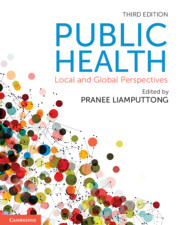Since W. E. B. Du Bois documented the physical and social environments of Philadelphia’s predominantly African American Seventh Ward over a century ago, there has been continued interest in understanding the distribution of social and physical environments by racial make-up of communities. Characterization of these environments allows for documentation of inequities, identifies communities which encounter heightened risk, and can inform action to promote health equity. In this paper, we apply and extend Du Bois’s approach to examine the contemporary distribution of physical environmental exposures, health risks, and social vulnerabilities in the Detroit metropolitan area, one of the most racially-segregated areas in the United States. We begin by mapping the proximity of sensitive populations to hazardous land uses, their exposure to air pollutants and associated health risks, and social vulnerabilities, as well as cumulative risk (combined proximity, exposure, and vulnerability), across Census tracts. Next, we assess, quantitatively, the extent to which communities of color experience excess burdens of environmental exposures and associated health risks, economic and age-related vulnerabilities, and cumulative risk. The results, depicted in maps presented in the paper, suggest that Census tracts with greater proportions of people of color disproportionately encounter physical environmental exposures, socioeconomic vulnerabilities, and combined risk. Quantitative tests of inequality confirm these distributions, with statistically greater exposures, vulnerabilities, and cumulative risk in Census tracts with larger proportions of people of color. Together, these findings identify communities that experience disproportionate cumulative risk in the Detroit metropolitan area and quantify the inequitable distribution of risk by Census tract relative to the proportion of people of color. They identify clear opportunities for prioritizing communities for legislative, regulatory, policy, and local actions to promote environmental justice and health equity.
